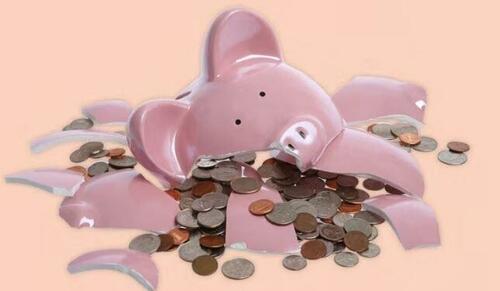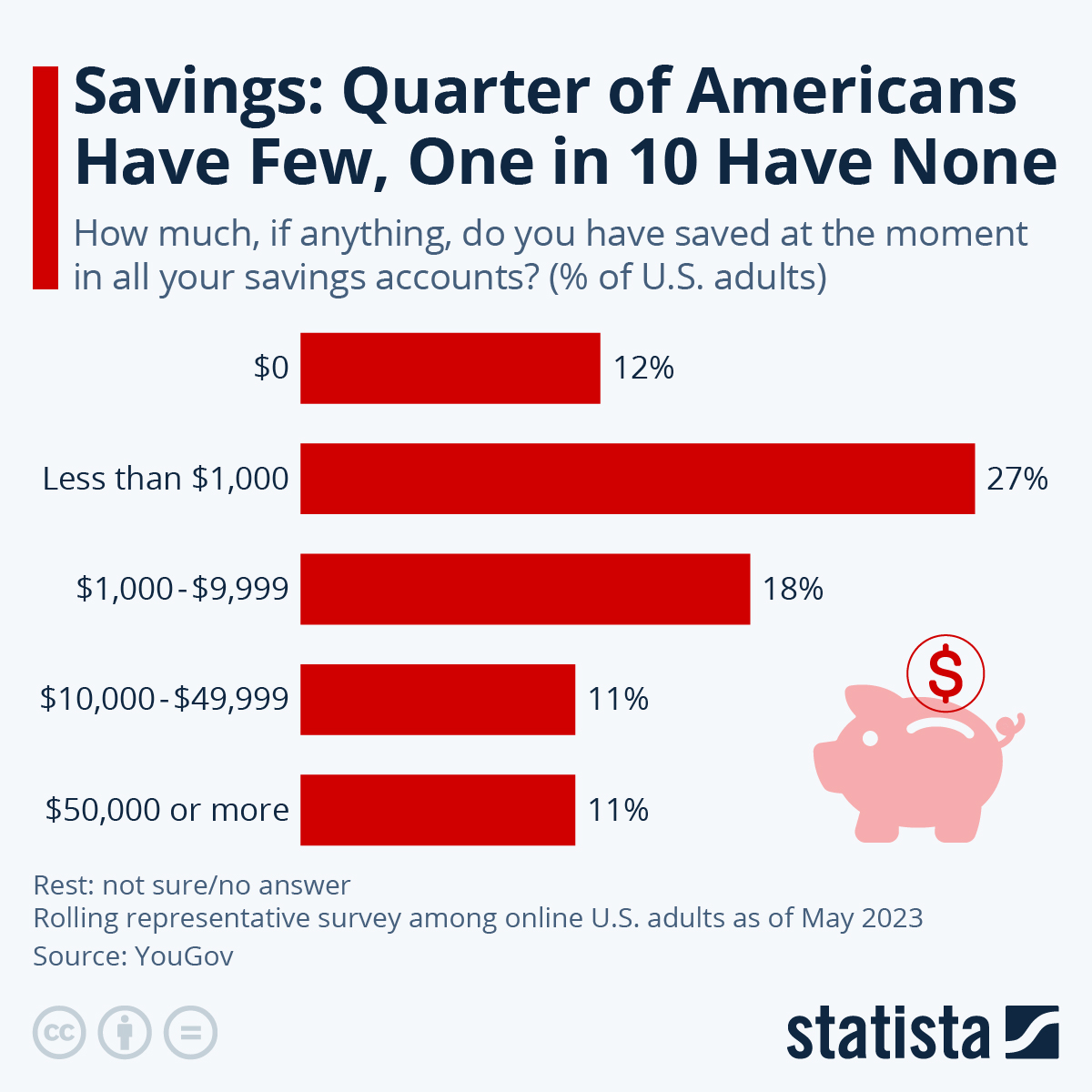Americans today are lacking crucial savings needed for managing short-term emergencies and building long-term wealth.
As Statista’s Katharina Buchholz reports, according to a rolling representative online survey among U.S. adults by YouGov, 27 percent of Americans had some savings below $1,000 as of May 2023, while 12 percent said they had no savings at all.
You will find more infographics at Statista
This is about as many people as those who volunteered to give answers about the status of their savings and had more than $1,000 in the bank. 18 percent said their saving were at least $1000 but under $10,000, while 11 percent each had $10,000 to $49,999 and $50,000 or more saved up. A substantial share of respondents – 17 percent – preferred not to answer.
The survey also found that U.S. women were much less likely to have (substantial) savings. Women’s wages are lower on average than men’s due to less pay for the same work, more work in low-paying or part-time positions and due to the so-called motherhood penalty – the missed wage increases and promotions women experience because they take more time off for child rearing. Additionally, women in the U.S. have higher student loan debt on average, also affecting savings negatively.
Married Americans were most likely to have big savings in the U.S., with 10 percent of them having put away $100,000 or more, compared to just 6 percent of widowed, 4 percent of partnered and 3 percent of single Americans. According to the Institute for Family Studies, the higher wealth of married Americans is due to a correlation of high education status and stable marriages. These marriages among the highly educated are also more likely to include two earners, which again increases the likelihood of big savings.
In the OECD, Americans saved the 7th highest amounts of money but had only the 15th highest savings rate in 2020.
This shows that Americans, who have the highest disposable incomes in the OECD, are simply not saving as much of them as people in other developed nations despite opportunity to do so. Since the pandemic, U.S. savings rates have dropped even more.




